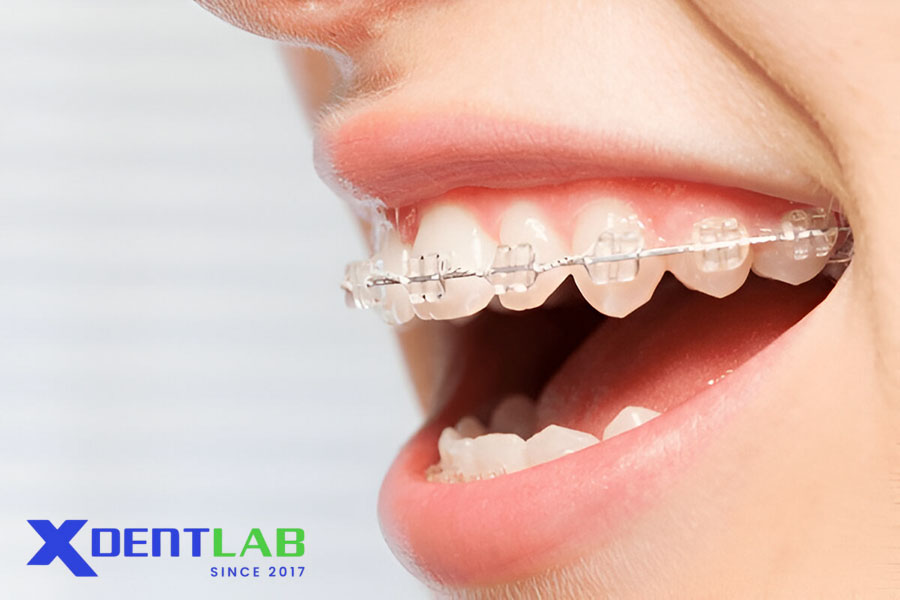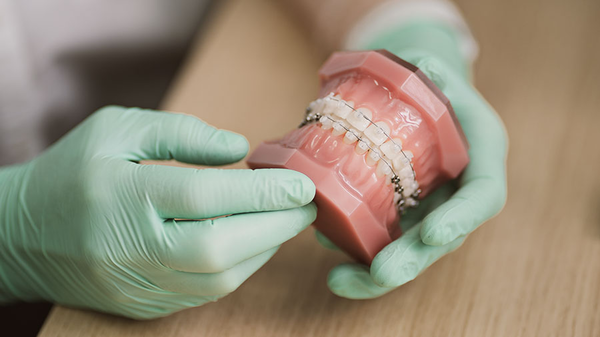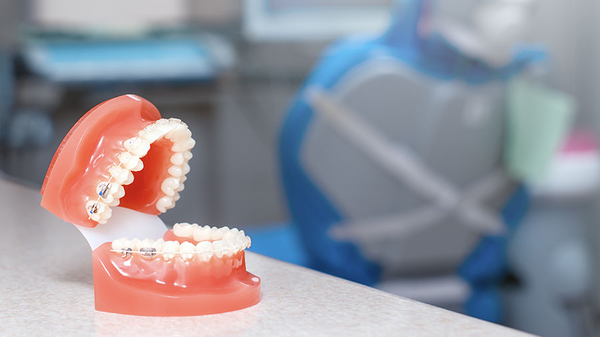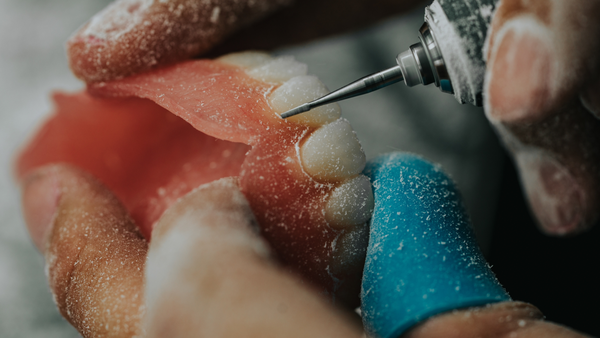Learn how monocrystalline sapphire brackets are transforming ceramic orthodontics with superior optical clarity, reduced friction, and advanced laser compatibility. Discover their clinical advantages, manufacturing process, and why they outperform traditional polycrystalline ceramic brackets.

Table of contents [Show]
Monocrystalline sapphire brackets are revolutionizing ceramic orthodontics with their superior optical, mechanical, and clinical properties. Known for their exceptional transparency, reduced friction, and high compatibility with advanced debonding techniques, these brackets offer a significant upgrade over traditional polycrystalline ceramic materials. This article explores the unique material characteristics, manufacturing processes, and clinical advantages of monocrystalline sapphire brackets, highlighting their transformative impact on orthodontic treatments.
Material Properties and Transmission Characteristics
One of the defining features of monocrystalline sapphire brackets is their optical clarity. Research shows that these brackets exhibit the highest transmissibility for 2940 nm wavelength light, surpassing both polycrystalline and composite ceramic brackets. This superior light transmission is particularly valuable for laser-assisted debonding procedures, allowing for more precise and efficient orthodontic treatment.
Friction Characteristics
Friction plays a critical role in orthodontics, influencing the efficiency of tooth movement during treatment. Studies comparing monocrystalline sapphire and polycrystalline alumina brackets reveal that sapphire brackets consistently demonstrate lower frictional values. The single crystal structure of sapphire contributes to smoother surfaces, significantly reducing friction resistance in both dry and wet conditions.
This reduced friction translates to more efficient interactions between the bracket-archwire system, optimizing treatment outcomes and minimizing discomfort for patients.
Surface Morphology and Clinical Performance

The smooth surface morphology of monocrystalline sapphire brackets is a result of their unique single crystal structure, which lacks grain boundaries. In contrast, polycrystalline materials feature multiple crystal grains that create surface irregularities, increasing friction and resistance.
Key Benefits of Smooth Surface Morphology:
Reduced resistance in bracket-archwire systems.
Improved sliding mechanics, enhancing treatment efficiency.
Lower risk of staining or discoloration over time.
These surface characteristics make monocrystalline sapphire brackets ideal for patients seeking both aesthetic and functional benefits during orthodontic treatment.
Comparison with Other Ceramic Materials
Monocrystalline sapphire brackets offer several advantages over traditional polycrystalline ceramic brackets:
Optical Clarity: Sapphire brackets are virtually transparent, blending seamlessly with natural teeth for superior aesthetics.
Lower Friction: Reduced frictional forces enhance tooth movement efficiency.
Smoother Surface Finish: The absence of grain boundaries ensures a polished, smooth surface.
Laser Compatibility: High light transmission properties enable efficient laser-assisted debonding.
While polycrystalline ceramic brackets remain a popular choice, monocrystalline sapphire brackets represent a significant advancement in terms of both performance and aesthetics.
Laser Debonding Applications
Monocrystalline sapphire brackets are particularly well-suited for laser-assisted debonding procedures. Their superior light transmission properties allow for more efficient energy absorption during ablative debonding, reducing the risk of damage to surrounding tissues.
Advantages in Laser Debonding:
Precision: Enhanced transmissibility ensures targeted energy application.
Efficiency: Faster debonding reduces chair time.
Safety: Lower energy densities minimize patient discomfort and tissue damage.
These properties make sapphire brackets a preferred choice for orthodontists utilizing advanced debonding techniques.
Manufacturing and Structure

The manufacturing process of monocrystalline sapphire brackets involves growing single crystals of aluminum oxide (Al₂O₃). This process results in a uniform crystalline structure without grain boundaries, unlike polycrystalline ceramic brackets, which are composed of multiple crystal grains sintered together.
Benefits of Single Crystal Structure:
Enhanced strength and durability.
Improved aesthetic transparency.
Consistent mechanical performance.
This advanced manufacturing process ensures that sapphire brackets maintain their superior optical and mechanical properties throughout the treatment period.
Clinical Advantages
Monocrystalline sapphire brackets offer a range of clinical benefits that make them an attractive option for both orthodontists and patients:
Aesthetic Appeal: Their transparency provides a natural look, making them ideal for patients seeking discreet treatment options.
Reduced Friction: Lower frictional forces lead to faster and more efficient tooth movement.
Laser Compatibility: High transmissibility enhances the effectiveness of laser-assisted debonding.
Resistance to Staining: Sapphire brackets are less prone to discoloration compared to other ceramic materials.
Durability: The single crystal structure ensures long-lasting performance.
These advantages make monocrystalline sapphire brackets a game-changing solution in ceramic orthodontics, combining functionality with aesthetics to deliver superior treatment outcomes.
Conclusion
Monocrystalline sapphire brackets represent a significant advancement in ceramic orthodontics, offering unparalleled optical clarity, reduced friction, and compatibility with modern debonding techniques. Their unique single crystal structure ensures smooth surfaces, improved mechanical performance, and enhanced aesthetics, making them an ideal choice for patients and orthodontists alike.
As the demand for discreet and efficient orthodontic solutions continues to grow, monocrystalline sapphire brackets stand out as a cutting-edge option that bridges the gap between functionality and aesthetics. For practices looking to elevate their orthodontic offerings, incorporating these advanced brackets into treatment plans can provide transformative results.
XDENT LAB is an expert in Lab-to-Lab Full Service from Vietnam, with the signature services of Removable & Implant, meeting U.S. market standards – approved by FDA & ISO. Founded in 2017, XDENT LAB has grown from local root to global reach, scaling with 2 factories and over 100 employees.. Our state-of-the-art technology, certified technicians, and commitment to compliance make us the trusted choice for dental practices looking to ensure quality and consistency in their products.

Our commitments are:
100% FDA-Approved Materials.
Large-Scale Manufacturing, high volume, remake rate < 1%.
2~3 days in lab (*digital file).
Your cost savings 30%.
Uninterrupted Manufacturing 365 days a year.
Contact us today to establish a strategy to reduce operating costs.
--------❃--------
Vietnam Dental Laboratory - XDENT LAB
🏢 Factory 1: 95/6 Tran Van Kieu Street, Binh Phu Ward, Ho Chi Minh City, Vietnam
🏢 Factory 2: Kizuna 3 Industrial Park, Can Giuoc Commune, Tay Ninh Province, Vietnam
☎ Hotline: 0919 796 718 📰 Get detailed pricing
Share this post:
Related Posts

Polycrystalline alumina brackets offer durable and aesthetic solutions for orthodontics. Dive into their structure, benefits, and recent advancements in technology.

Ceramic brackets provide superior aesthetics and biocompatibility for orthodontic patients. Dive into their types, materials, and clinical uses.

Acrylic resins, especially PMMA, have transformed denture fabrication with its strength, esthetics, and adaptability. This article explores the evolution of acrylic materials, highlighting their chemi...


